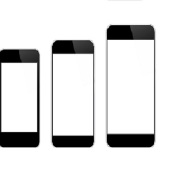3 Top Advantages of Having a Digital Curriculum
In our digital society, everyone communicates, learns, and explores across countless technological platforms.
The 21st century student now has access to several online tools including digital textbooks as well as ways to map out their digital curriculum effectively, in order to suit their learning needs. Here are some of the advantages of this progressing technology:
eBook Initiatives Bring Higher Attendance Rates
Lugging around heavy textbooks can be a great workout, but it doesn’t exactly provide the mental and physical motivation needed to make it to class on time, if at all.
Studies show that learning with laptops and the option to utilize eBooks has several positive educational outcomes. An evaluation of the North Carolina 1:1 Learning Technology Initiative has revealed greater attendance, graduation, and teacher retention rates, as well as improved testing and writing scores for students with access to more educational technology.
eBooks Save Money For Students
Not only are many textbooks cumbersome to pack and carry throughout the day, but they are often expensive, or even out of stock at certain stores.
Replacing textbooks with digital content is extremely beneficial for both schools as well as students and their families, helping them save as much as 60% on textbook costs.
eBooks Are Up-To-Date
Pluto isn’t technically a planet anymore – it’s a dwarf planet. If you didn’t already know that, then your textbooks may be a bit outdated.
That may seem exaggerated, but it can actually take traditional textbooks up to two years to print, so some of the content may have changed or re-classified once the actual textbook is published.
Digital content is easier to update as more information is discovered, and provides students and teachers a cost-effective way to quickly download new versions of eBook to ensure that they have the most up-to-date information available.




